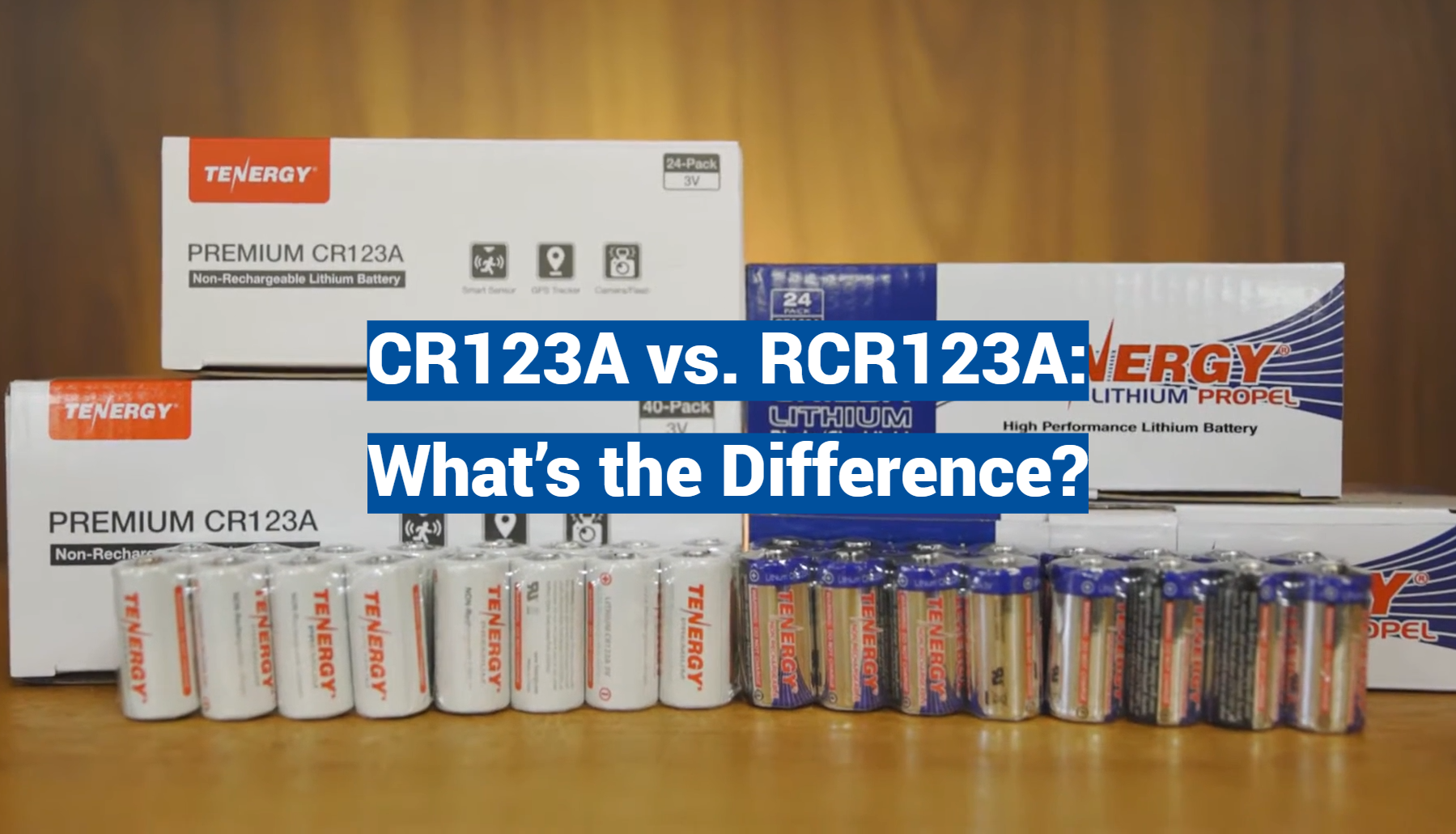Batteries, the unsung heroes of our electronic devices, often go unnoticed until they need to be replaced. But, did you know that not all batteries are created equal? In the vast sea of options, two types stand out: CR123A and RCR123A batteries. At first glance, they may seem like mere jumbles of letters and numbers, but fear not! This guide will unravel the perplexing mystery and shed light on the differences between these two battery powerhouses. So, buckle up and prepare to embark on an electrifying journey as you explore the intriguing realm of CR123A vs. RCR123A batteries.
What are lithium-ion batteries?
Lithium-ion batteries are one of the most commonly used types of rechargeable batteries. They are a type of battery chemistry that uses lithium as its key active material, which is why they are referred to as “lithium-ion”. Lithium-ion batteries have several advantages over other types of batteries, such as higher energy density, longer life span, and lower self-discharge rate. They are also lighter in weight than other types of rechargeable batteries which makes them ideal for portable applications such as laptops, cell phones and digital cameras.
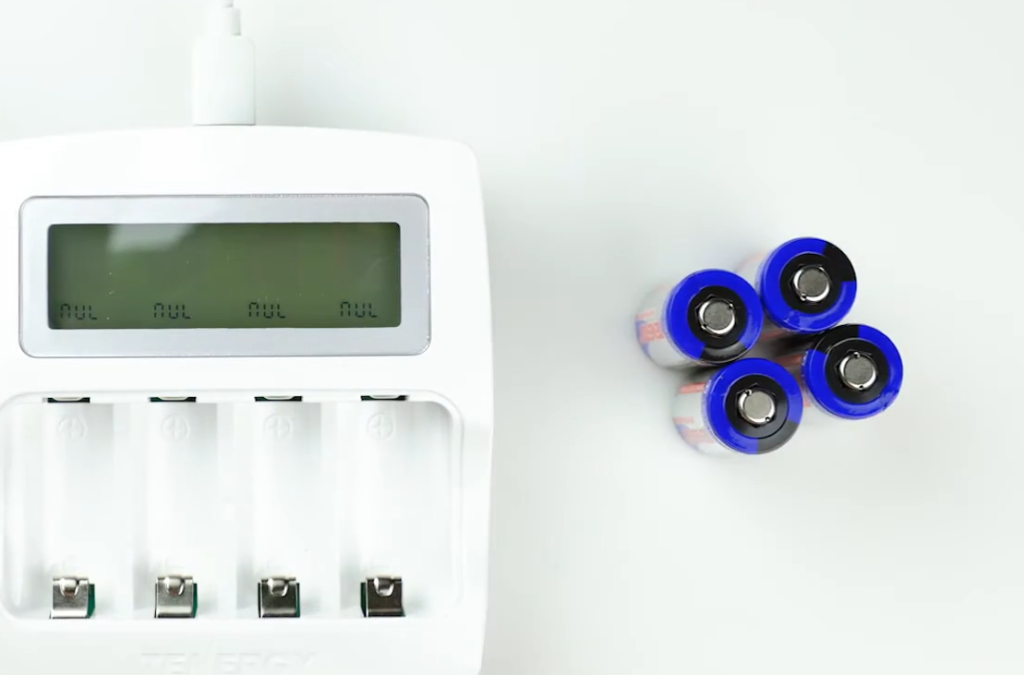
Lithium-ion batteries work by transferring electrons from one electrode to another through an electrolyte. This reaction creates an electric current which is used to power the device or store energy for future use. The lithium-ion battery works by cycling between two states, charging and discharging. During the charging cycle, electrical energy is applied to the battery which causes lithium ions in the cathode to move towards the anode. During discharge, the reverse process occurs, and lithium ions move from the anode to the cathode. This creates an electric current that powers the device or stores energy for future use.
Lithium-ion batteries have several advantages over other types of rechargeable batteries. They offer higher energy density than other battery chemistries as well as a longer life span and lower self-discharge rate. They are also lighter in weight than other types of batteries which makes them ideal for portable applications such as laptops, cell phones and digital cameras.
Lithium-ion batteries are used in a wide range of applications including portable electronic devices, electric vehicles, and stationary energy storage systems. They are also used as backup power sources for medical equipment and other critical infrastructure. In addition, lithium-ion batteries are commonly used in consumer products such as laptops, cell phones and digital cameras.
Lithium-ion batteries can also be used for renewable energy storage and are increasingly being deployed in grid-scale energy storage applications to help balance the supply and demand of electricity on the power grid. This allows consumers to take advantage of lower cost, higher quality power when it is available and also to store excess energy from renewable sources for use when needed [1].

Overview of CR123A Battery
The CR123A is also known for its long shelf life, with some models providing up to 10 years of use before needing to be replaced. The battery is also very durable, making it a great choice for those who need reliable power in harsh conditions. Additionally, the CR123A does not contain hazardous metals like cadmium or mercury, making it a safe option for those who are looking to reduce their environmental impact.
Finally, the CR123A is relatively inexpensive when compared to other power sources, making it a great choice for those on a budget. Overall, the CR123A battery makes an excellent choice for powering small electronics due to its compact size, high power output, long shelf life, durability, and affordability. With a wide range of sizes available, it is easy to find the perfect battery for any application [2].
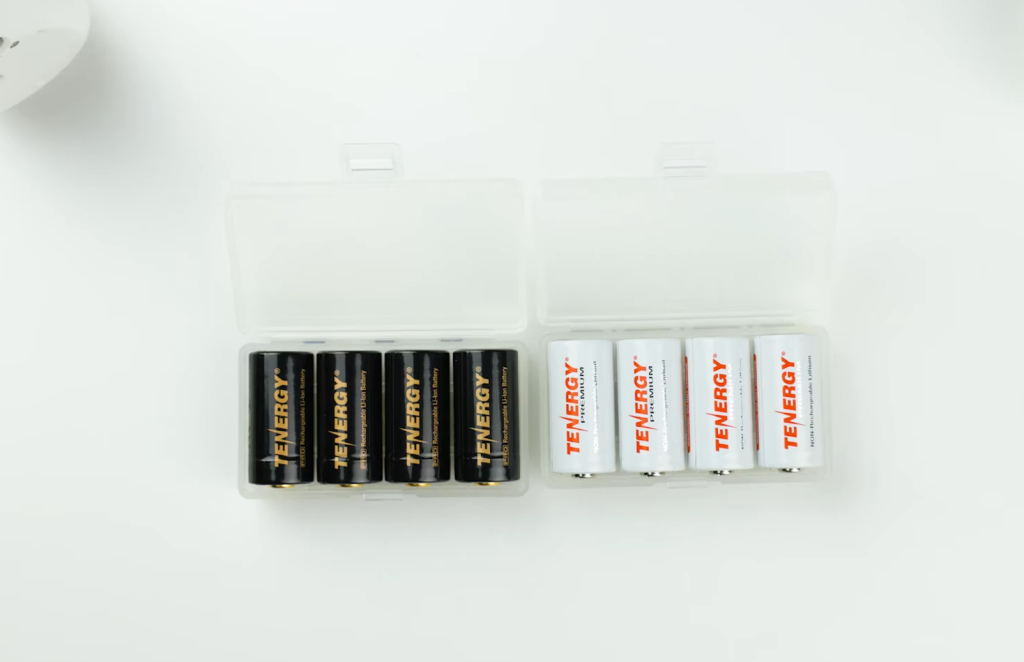
Overview of RCR123A Battery
The RCR123A battery is a widely used 3.7V lithium-ion rechargeable battery, commonly found in small electronics such as cameras, flashlights, and even some drones. The size of the battery makes it ideal for powering these devices due to its relatively compact size and high capacity. It is also one of the most popular types of batteries among amateur hobbyists and professionals alike.
The RCR123A battery has a nominal voltage of 3.7V, with an operating temperature range between -20°C and 60°C. It is also able to withstand up to 500 charge/discharge cycles before needing to be replaced. The battery also boasts a long shelf life, as it can hold up to 85% of its charge for up to 1 year at room temperature.
In terms of safety, the RCR123A battery is quite safe to use. It features overcharge and short-circuit protection, as well as a heat-resistant outer casing to prevent any kind of thermal runaway. The battery also has a low self-discharge rate and can be stored at room temperature without any major issues.
Overall, the RCR123A battery is an excellent choice for powering small electronic devices due to its relatively low cost, high capacity, and long shelf life. It is also a very safe battery that offers good protection against overcharging and short circuits. With its lightweight design and great performance, it has become one of the go-to batteries for amateur and professional hobbyists alike.
When purchasing the RCR123A battery, it is important to make sure that you are buying a genuine product from a reputable supplier. There are many counterfeit versions of this battery on the market, so being informed and taking the necessary precautions can help ensure that you get a quality product. Additionally, when using the battery it is important to adhere to the manufacturer’s instructions and safety precautions. This will help ensure that you get the best performance out of your RCR123A battery and avoid any potential hazards [3].
CR123A vs. RCR123A
Dimensions
The CR123A battery, commonly used in electronic devices, has a diameter of 17.0 mm, while the RCR123A variant boasts a slightly slimmer profile with a diameter of 16.0 mm. Additionally, the CR123A measures 34.5 mm in length, while the RCR123A stands at 33.1 mm. These minute differences in size can have significant implications when it comes to compatibility and fit within various devices and equipment.
Capacity
CR123A and RCR123A batteries are also distinguished by their respective capacities. The CR123A, with a capacity of around 1500 mAh, is known for its reliable power output. On the other hand, the RCR123A exceeds this with its impressive 1800 mAh rating, making it a top choice for high-powered devices that demand optimal performance. Whether it’s capturing stunning photos with your digital camera or illuminating your path with a tactical flashlight, the RCR123A’s higher capacity ensures a longer-lasting and more efficient power supply. With these batteries at your disposal, you can confidently tackle any task that requires a higher output.
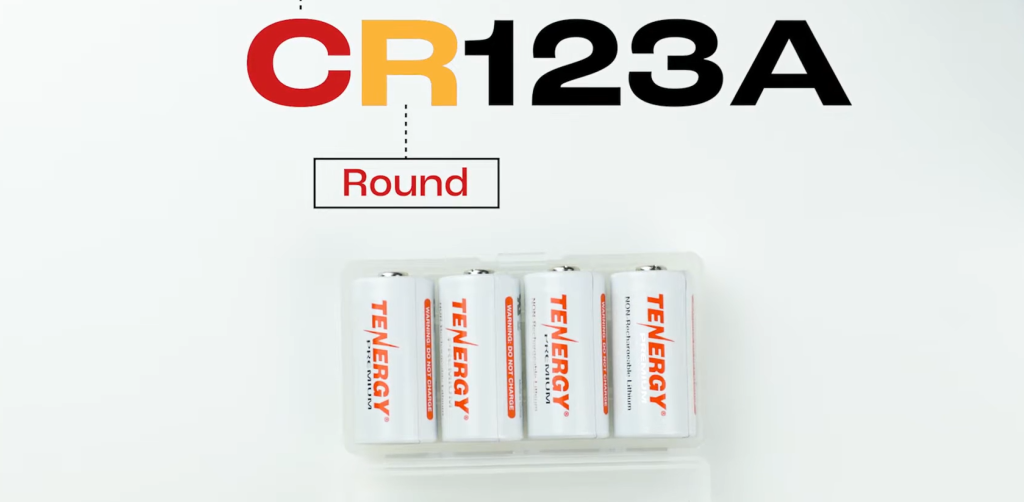
Voltage
CR123A and RCR123A batteries are both excellent options for powering a wide range of electronic devices, thanks to their nominal voltage of 3V. This standard voltage ensures compatibility with the majority of devices, but it’s always a good idea to double-check with the manufacturer or consult the user manual before making your battery selection. By doing so, you can ensure optimal performance and avoid any potential compatibility issues. Remember, taking the time to verify compatibility will save you from any future inconvenience or disappointment.
Initial Charging Conditions
When it comes to charging, both CR123A and RCR123A batteries require the same initial conditions. Regardless of which type you choose, these batteries should be charged at a current rate of 0.2C (300mA) for optimal performance and safety. It’s also important to note that neither battery can sustain a charge over 2.0V per cell, so it’s essential to monitor the voltage during charging. Once they reach 2.0V per cell, disconnect the charger immediately and avoid overcharging these batteries.
Shelf-life/Storage
Like all lithium batteries, both the CR123A and RCR123A should be stored in a cool, dry place with temperatures below 25°C. This is especially important when the battery isn’t actively in use, as exposure to hot or humid environments can reduce their shelf-life significantly. Additionally, these batteries should always be disconnected from any device before storage, as a sudden voltage drop can cause damage to both the battery and the device. By following these simple guidelines, you can maximize the lifespan of your CR123A or RCR123A battery for years to come.
Charge/Discharge Cycles
In terms of charge/discharge cycles, the CR123A and RCR123A boast impressive lifespans. While the CR123A can endure around 500 full recharges before losing capacity, its RCR123A counterpart can easily withstand up to 800 charges with minimal lifespan degradation. With proper maintenance and storage habits, these batteries are sure to provide reliable power for all your electronics needs in the long run.
Safety
It’s important to note that both CR123A and RCR123A batteries require strict safety measures when handling. These lithium-based batteries are highly combustible and must be kept away from any direct heat sources or flames. Additionally, extreme caution should be taken when connecting the battery to a device, as any short circuit can cause dangerous sparks or fire. When
Cost
When it comes to cost, there is a noticeable difference between the CR123A and RCR123A batteries. The CR123A battery is typically less expensive than its RCR123A counterpart, making it an economical choice for those on a tight budget. On the other hand, the higher capacity of the RCR123A, combined with its impressive lifespan, makes it a worthwhile investment for those who want an efficient power source that can hold up over time [4].
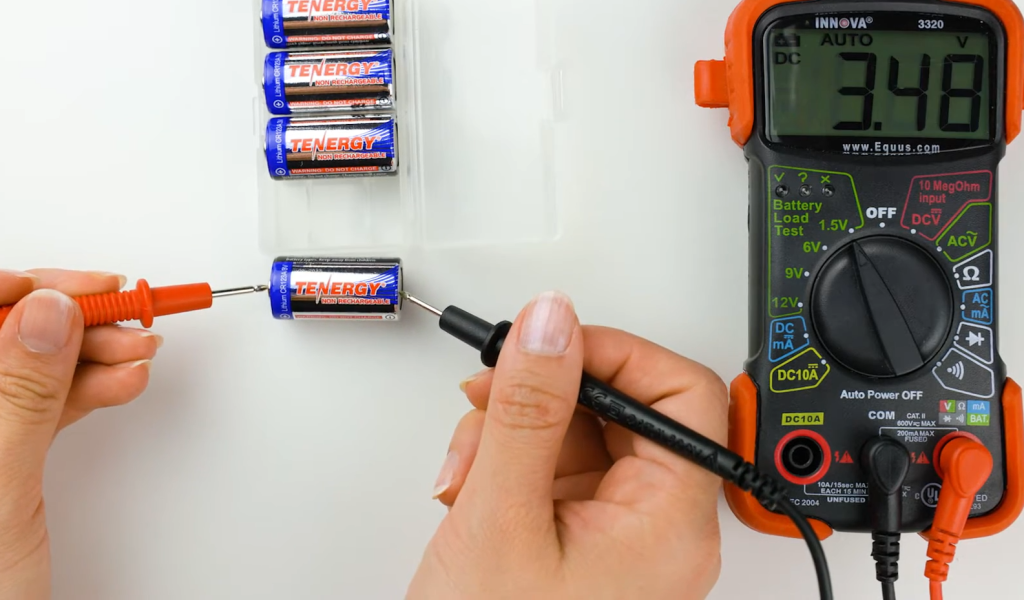
What are CR123A and RCR123A Batteries Used For?
CR123A and RCR123A batteries are the most common types of lithium-ion batteries used in flashlights, cameras, and other electronic devices. They offer a higher capacity than traditional alkaline batteries and have a longer shelf life. Additionally, they can be recharged hundreds of times when used with an appropriate charger, making them an economical choice for many applications.
CR123A batteries are also used in a variety of medical devices, such as glucose meters and infusion pumps. These types of batteries provide a reliable power source for the safe and efficient operation of these devices.
In addition to powering medical devices, CR123A and RCR123A batteries can be used in other applications that require high performance, such as remote-controlled toys and drones. They are also often used in emergency lighting systems and alarm devices due to their ability to provide reliable power for extended periods.
It’s important to note that CR123A batteries cannot be recharged with regular chargers because they have a different chemistry than other lithium-ion batteries. Therefore, it is important to use a charger specifically designed for these types of batteries. With the proper care and maintenance, CR123A and RCR123A batteries can provide reliable power to your devices for many years.
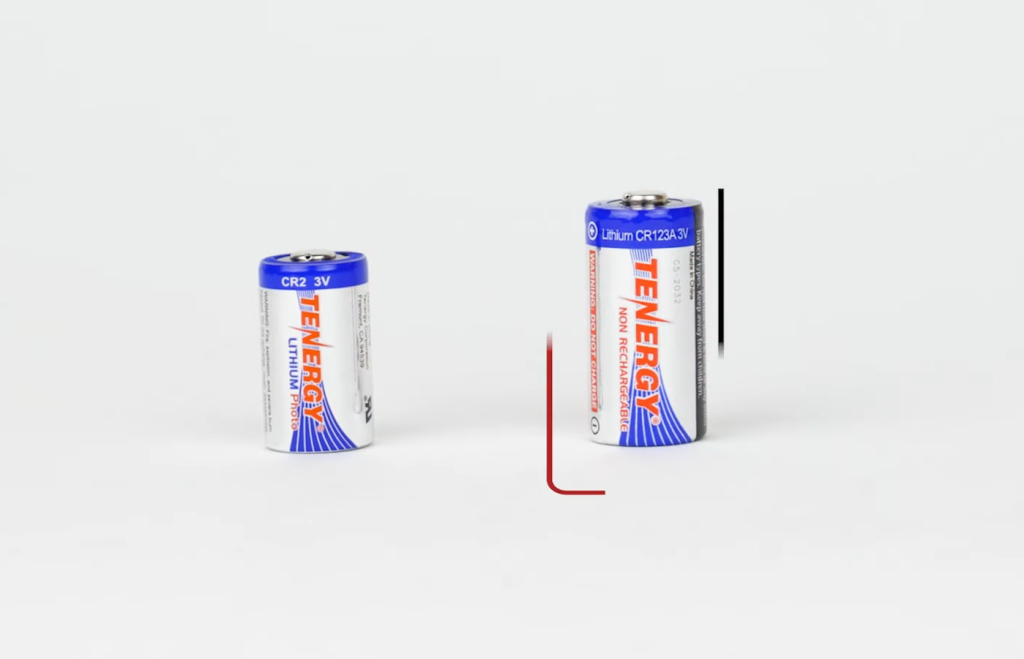
FAQ
What is RCR123A?
RCR123A is a specific type of lithium-ion rechargeable battery that has gained popularity in the consumer electronics market. Known for its exceptional performance, this battery offers not only high energy density and long life but also superior reliability. With its robust design, it has become the go-to choice for powering various devices, including digital cameras, flashlights, and other small electronic gadgets.
One of the key advantages of RCR123A batteries is their ability to be recharged up to 500 times, making them a cost-effective solution for long-term usage. This feature not only saves money but also reduces the environmental impact of disposable batteries. Additionally, RCR123A batteries are eco-friendly as they do not contain any hazardous materials, ensuring a safe and sustainable power source for your devices.
With its impressive combination of performance, longevity, and eco-conscious features, RCR123A batteries continue to be a reliable and efficient energy solution for a wide range of applications.
What is the difference between RCR123A and CR123 batteries?
When comparing RCR123A and CR123 batteries, there are several key differences to consider. One notable distinction is the rechargeability factor. RCR123A batteries can be recharged up to 500 times, offering a cost-effective and environmentally friendly option. On the other hand, CR123 batteries are non-rechargeable and can only be used once, making them a convenient choice for certain applications.
In addition to rechargeability, energy storage is another aspect to consider. RCR123A batteries boast a higher energy density compared to CR123 batteries. This means they can provide more power for longer durations, making them suitable for high-drain devices and situations where extended usage is required. By understanding these differences, you can make an informed decision based on your specific needs and preferences.
Are RCR123A batteries safe to use?
Yes, RCR123A batteries are safe to use when handled properly. These lithium-ion batteries are designed with safety features to prevent overheating, leakage, and other potential hazards. It is important to always store them in a cool and dry place, away from direct sunlight, to maintain their performance and longevity. When it comes to recharging, it is crucial to use the recommended charger specifically designed for RCR123A batteries. This ensures proper charging and prevents overcharging, which can reduce the battery’s lifespan. By following these safety guidelines and best practices, you can rely on RCR123A batteries to provide consistent and reliable power for all your devices, giving you peace of mind.
Are CR123A Batteries Rechargeable?
No, CR123A batteries are not rechargeable. They are single-use batteries and must be disposed of properly after each use. On the other hand, RCR123A batteries, which are a type of lithium-ion rechargeable battery, offer a more sustainable option for consumer electronics. These rechargeable batteries can be used multiple times, reducing the environmental impact and providing cost savings in the long run. So, if you’re looking for a more eco-friendly and cost-effective choice, RCR123A batteries are the way to go.
Is RCR123A the same as CR123A?
No, RCR123A and CR123A are two distinct battery types. CR123A batteries, also known as 3V lithium batteries, are single-use, non-rechargeable batteries commonly used in high-drain devices such as cameras and flashlights. On the other hand, RCR123A batteries, also known as 16340 batteries, are lithium-ion rechargeable batteries that can be recharged up to 500 times. They are a popular choice for those seeking a more eco-friendly and cost-effective option in the long run. With their ability to be recharged multiple times, RCR123A batteries offer convenience and sustainability for various electronic devices.
What devices use RCR123A?
RCR123A, also known as rechargeable lithium-ion batteries, is widely utilized in an array of digital cameras, flashlights, and other compact electronic devices. Its versatility extends beyond these applications as it finds utility in alarm systems, pet tracking collars, and medical devices as well. Renowned for its high energy density and prolonged lifespan, RCR123A has become a favored power source for an extensive range of consumer electronics, catering to the ever-growing demands of modern technology.
What batteries are equivalent to CR123A?
The closest equivalent to CR123A batteries is RCR123A batteries. They both share similar dimensions and voltage output, with the main difference being that RCR123A is rechargeable while CR123A is disposable. With its ability to be recharged up to 500 times, RCR123A offers a more cost-effective and eco-friendly choice for powering various consumer electronics. Despite this difference, RCR123A still holds its own when it comes to performance and reliability, making it an ideal alternative to CR123A batteries.
What is the charge capacity of RCR123A?
RCR123A batteries boast a high energy density with an impressive charge capacity of 800-1200 mAh. This value varies depending on the specific brand and model, but it generally has a capacity much higher than CR123A batteries. With its impressive charge capacity and rechargeable capabilities, RCR123A is quickly becoming a popular choice for powering various electronic devices due to its cost-effectiveness and sustainability. Additionally, since it does not contain any hazardous materials, it offers an eco-friendly power source to sustain our digital lifestyles.
Is a CR123A the same as an AC battery?
No, CR123A and AC batteries are not the same. While both types of batteries are similar in size, they have very different voltage outputs. CR123A batteries are 3V lithium-ion batteries while AC batteries offer a maximum voltage output of 9V. Additionally, while CR123A is a single-use, non-rechargeable battery, AC batteries are rechargeable and can be used multiple times. Therefore, when deciding between these two battery types, it’s important to consider the specific voltage requirements of your device and whether you need a single-use or rechargeable battery.
What is the shelf life for RCR123A batteries?
The shelf life for RCR123A batteries varies depending on the specific brand and model. Generally, these lithium-ion batteries offer a good shelf life of up to 10 years when stored at room temperature. It is important to keep RCR123A batteries away from any sources of heat or direct sunlight as this can reduce their lifespan significantly. Additionally, it is advisable to recharge them every 3-6 months even if they are not being used as this helps maintain their performance and longevity. Properly storing RCR123A batteries can ensure that they retain their power and reliability over time, ensuring optimal performance for years to come.
How often should I recharge my RCR123A battery?
It is recommended to recharge your RCR123A battery every 3-6 months even if it is not being used. This helps maintain the battery’s performance and ensure its longevity. Additionally, it is important to use the recommended charger specifically designed for RCR123A batteries to avoid any potential damage from overcharging. By recharging your RCR123A battery regularly and following these safety guidelines, you can rely on this rechargeable lithium-ion battery as a reliable and cost-effective power source for your devices.
Conclusion Paragraph
So, the differences between CR123A and RCR123A batteries are significant. They have different chemistries, voltages, sizes and capacities. The CR123A battery is smaller in size but more powerful, while the RCR123A has a higher capacity at a slightly larger size. Both batteries have their advantages and it is important to consider the application when choosing which one to use. Ultimately, it is important to make sure that whichever battery you use, is certified to the relevant safety standards. By following this advice, you will ensure that your device is safe and performs optimally.
Useful Video: Answers to frequently asked questions about Tenergy’s CR123A batteries
References:
- https://ul.org/research/electrochemical-safety/getting-started-electrochemical-safety/what-are-lithium-ion
- https://www.microbattery.com/lithium/cr123a.html
- https://lightsngear.com/what-is-an-rcr123/
- https://www.utmel.com/components/cr123a-vs-rcr123a-are-they-interchangeable-faq-video?id=2140

